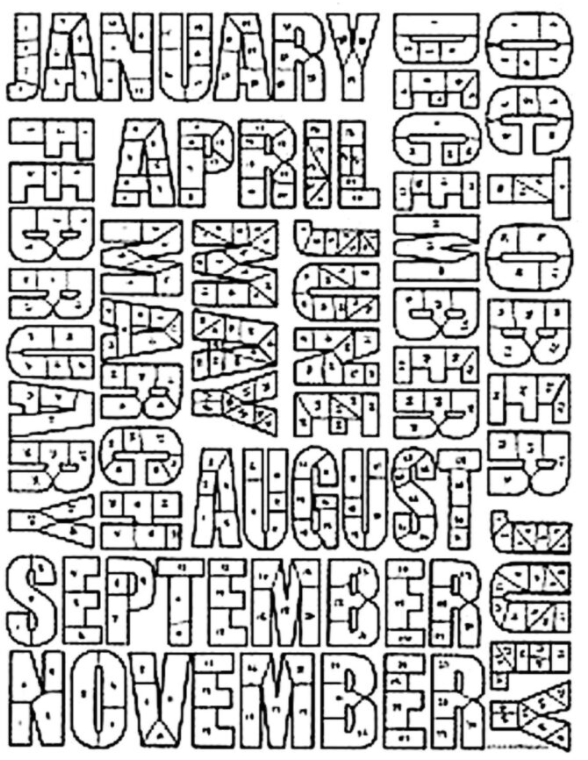
There are so many ways to approach building a new positive habit, however the key component of success is SELF-FORGIVENESS. If you fall off the wagon, forgive yourself, brush yourself off, and climb back on again!
Aim for Consistency (NOT Perfection)
It’s a rare situation where one decides to make a change, and SHAZAAM! the change is permanently made. Most of us tend to lapse back to our old comfortable habits – even though we don’t want to – because they take less work and require less attention.
Believe it or not, that’s part of the habit-changing process. It’s no big deal. Nevertheless, problems arise because we (inappropriately) equate those moments of returning to “normal” as constituting failure. It’s not! It’s just part of the process.
Why Is It Okay to Slip?
What? You forgot to floss this whole week, even after you committed yourself to taking better care of your gums? So what? Go get the floss, and resume your commitment. No guilt. No self-recrimination. It’s okay. Just do it!
Unlike the first time you picked up the floss, now you’ve done it a few times. You’ll find it easier this time because it’s more familiar… especially if you forgive yourself for having a normal learning curve, and appreciate yourself for climbing back on that horse!
Lifestyle Change = New Habit
Personally, I prefer a combination of whatever works for the situation.
This is the third of 3 unique Progress Trackers you can try. Progress Trackers are so great because they visually show two types of Wins:
CONTINUITY: How many days in a row did you do the desired behavior?
FREQUENCY: How many times did you do the desired behavior?
Both components are important.
Continuity reflects the number of days in a row that you practiced the new habit. As that number increases, the behavior becomes more and more like a habit.
Frequency, on the other hand, reflects your return to your goals on those occasions when you slide back into old habits. (Don’t worry about that. It’s all part of the process.) Over time, you’ll see that increase, also.
Your objective is to do it as many times in a row as you can. For example you can track every day that you do something like:
- Skip all sugar and artificial sweeteners
- Have 4 servings of veggies
- Reduced your salt intake
- Keep your grains consumption to less than 3 servings
- Sweat for 30 minutes
- Avoid foods made from GMOs (Genetically Modified Organisms)
Any and All Progress – Even Tiny Progress – Is Real Progress.
Missed a day? No problem! Leave it blank and continue the day after!
Tip: Instead of looking at this as something you’re going to do over the course of the year (which can be daunting), break it down into smaller chunks. Start by committing to completely filling out ONE letter only. Then commit to filling out another letter. As your enthusiasm ebbs and flows, you’ll see some areas have more shading than others. THAT’S NORMAL! The important thing is to resume!
Directions
1. Print out the Progress Tracker and post it somewhere visible.
2. Inform your family that you are attempting to improve an aspect of your life, and that as part of that process, when they have time you’d to share an idea with them. That way you’ll be able to start immediately, and capitalize on the initial enthusiasm your desired habit generates.
3. When you do sit down to talk, have a copy of the Progress Tracker with you. (You don’t have to share the characteristic that you’re tracking if you don’t want to. They’ll see your progress regardless.)
4. Ask your family members for their support. Mention any typical family/individual behaviors that will inadvertently sabotage your efforts, and ask them to not do them.
5. Shade in every day on the Tracker that you do the new habit.
6. Celebrate your wins!
Progress Tracker #3 – Continuity Year Long Tracker
This chart (created by Dr. Peggy Malone) tracks the frequency that you did your habit over the course of a year. It also visually shows how your continuity increases over time. To reinforce a new habit you’d like to turn into a lifestyle change, color in the days you do it.
Click on image to download your free copy.

By the way, don’t forget to share this with your kids. Whether they are starting the school year, or smack in the middle of it, Visual Progress Trackers are a fun way to boost their experience.
This is the third post of a 3-part series. Part 1 and Part 2 have different types of Progress Trackers. Download the chart that best suits your goal, and post it where you will see it every day. Then take it one day at a time.
I’m always looking for more content to share with you. If you have any issues you’d like me to address, reach out at info@DeborahAnnDavis
More soon.
Wishing you health and happiness,
Deborah
Parenting Life Coach
If you enjoyed this article, please share with anyone who would benefit. For more ideas, get your copy of How To Keep Your Daughter From Slamming the Door here.



